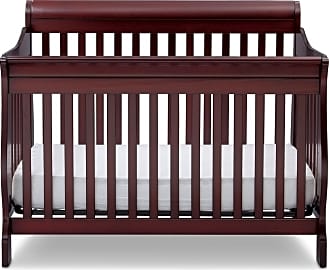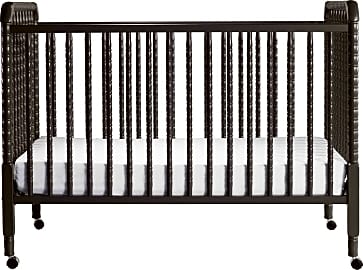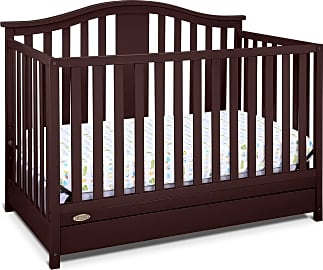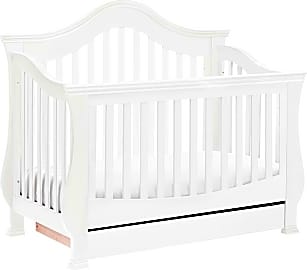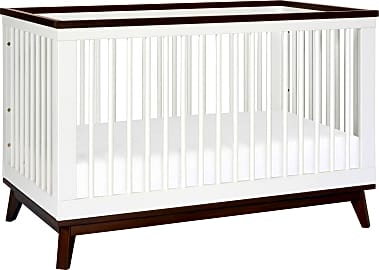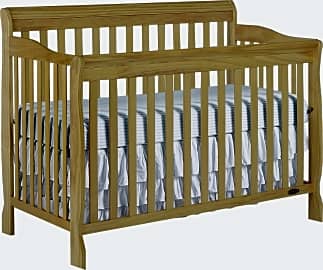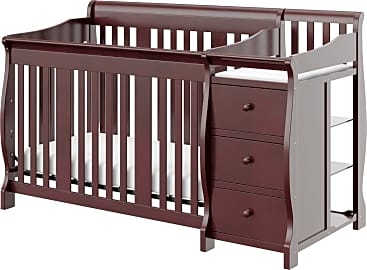The 10 Best Wood Cribs

This wiki has been updated 39 times since it was first published in April of 2015. Every parent wants to keep their baby away from harmful plastics and toxins, which is why these wooden cribs are a good choice. Your newborn will be able to sleep in style and comfort in one of these sturdy and attractive models. They come in a variety of designs to suit any decor, and some can also convert into toddler and teen beds, allowing them to grow with your child. When users buy our independently chosen editorial selections, we may earn commissions to help fund the Wiki.
Editor's Notes
June 27, 2020:
In this update, we replaced the now-discontinued Graco Harbor Lights with the Storkcraft Graco Solano, a convertible crib that can be used as a toddler bed if you purchase the corresponding rail separately. When the time comes, it also can be transformed into a full-size bed, giving you plenty of bang for your buck as it grows with your child. We also added the DaVinci Jenny Lind to replace the Broyhill Bowen Heights, which is no longer manufactured since the company closed its doors. The Jenny Lind is equipped with removable wheels, which comes in handy when you want to move it to vacuum your nursery’s carpet. With their locking design, you can rest assured it will stay in place nicely when you need it to remain stationary. It’s got a somewhat unique look with retro spindle posts, and comes in a nice selection of colors that include soft pink, vibrant emerald, and neutral slate. It’s Greenguard Gold certified, which means it’s been screened for more than 10,000 chemicals that could pollute indoor air.
Today we also moved the DaVinci Kalani much higher on the list, in part thanks to the high value it provides for the price. It’s made of solid, sustainable New Zealand pine, is also Greenguard Gold certified, and comes complete with the rail that turns it into a toddler bed. Unlike many others, this one also can be converted into a full-sized bed, making it ones less piece of furniture you’ll need to shell out money for as your child grows. The Babyletto Modo remains high on the list, and this modern crib will look great in any nursery, with its contrasting two-tone design of white and gray. The stable base is made up of wide, square feet, and it sports a compact, low-profile design that ensures it will fit nicely in your nursery. It comes with a straightforward assembly process, so it should be up and ready for use in very little time.
No matter which model you ultimately go with, for safety’s sake, be sure to follow the guidelines set forth by the U.S. Consumer Product Safety Commission regarding cribs. These include always placing your baby to sleep on his or her back on a firm, tight-fitting mattress. Do you put pillows, blankets, or stuffed animals in the crib, and do not use a bumper pad, as all of these can pose suffocation, strangulation, and choking hazards. Be sure to fill out the crib’s product registration card to be notified if it is recalled or there is determined to be a safety defect.
Special Honors
Kendall Convertible Crib Made of solid poplar that’s unlikely to become dinged or scratched, this handsome choice transforms from a crib to a toddler bed when you purchase the coordinating conversion kit. Unlike most, it’s equipped with plastic bars that will prevent damage if your teething baby decides to bite down on it. You can select from two white finishes, as well as gray or chocolate brown. This stable model is made up of mortise-and-tenon construction and tongue-and-groove joinery, and is manufactured in a Fair Trade Certified facility. Its Greenguard Gold certification ensures it meets low emissions standards. potterybarnkids.com
Carousel White Low-Profile Crib Featuring thin slats and gently curved edges, this durable poplar crib features a low-profile design that measures 35 inches from top to bottom. It can be put together in no time and can also be transformed into a toddler bed with the corresponding rail that’s sold separately. It can be lowered accordingly as your baby develops the ability to sit and stand. It’s available in a variety of colors, so it’s easy to find just the right one for your child’s nursery. crateandbarrel.com
A Brief History of Cribs
The infant would usually sleep with her mother, while the lucky father slept in a completely different bed entirely.
Cribs are so strongly associated with raising babies that you'd think that they had been around since the dawn of time. However, cribs actually date back to only the 19th century C.E.
Before that, babies usually slept with their mothers. Bedrooms as we know them didn't really exist; most beds resembled the four-poster models we have today, with drapes around them to keep the heat in. The infant would usually sleep with her mother, while the lucky father slept in a completely different bed entirely.
The closest thing babies had to cribs were cradles and bassinets. Usually made to rock, their primary purpose was to keep the baby in one place and entertained while the mother performed her daily duties.
Adults began sleeping in iron beds in the 17th century C.E., mainly as a response to concerns about bug infestations. As you might expect, that concern extended to infant beds as well, leading to iron bassinets and bed with chain running along the sides. These beds were then painted white...using lead paint that babies loved to gnaw and nibble on. Listen, our ancestors weren't the brightest (probably because they ate lead paint as babies).
Lead paint poisoning would go a long way towards explaining another fad that came along just before cribs were widely adopted: baby cages. Don't worry, these aren't what you think they are, unless you think they're cages for babies.
Cages. For babies.
A doctor named Luther Emmett Holt wrote a book about the importance of "airing out" children in 1894. He believed that subjecting babies to the elements would toughen up their immune systems.
After WWII, a focus on baby safety led to the demise of baby cages, because apparently hanging a baby out a tall building and letting it soak up smog was undesirable. This led to an explosion in popularity for modern cribs — modern, that is, except for the safety features.
Up to 200 babies a year died as a result of unsafe crib features until the U.S. Consumer Product Safety Commission passed regulations concerning their build. Since then, deaths caused by faulty cribs have plummeted, with most of them caused by antique cribs still in use.
Today, cribs are found in just about every house with a newborn in them, and many homes have several, including pack-and-plays and other portable models. They're safer than they've ever been, and presumably more comfortable as well.
You have to add your own lead paint, though (don't do this).
Choosing the Right Wooden Crib
Having a baby is a completely overwhelming process. You have to prepare to have your life turned upside down, you have to learn a whole new set of rules and regulations, and oh yeah...there's the stuff.
So much stuff.
It will seem like the stakes behind every purchase are life-and-death, and nowhere is this more apparent than when you're crib shopping.
These can turn into toddler and child beds as your kid ages, saving you from having to buy at least a couple pieces of furniture.
The most important thing you can do is get a new crib, one that's been tested and certified to meet all current safety regulations. You may love how that antique crib looks in your nursery, or your mom may try to sell you on that hand-me-down bed that's been in the family for generations, but be aware that the risk to your child will go up exponentially if you get an older model.
Also, avoid drop-side rail cribs at all costs. They were responsible for dozens of fatalities, due largely to children getting in between the gaps and suffocating. The good news is that it's illegal to buy, sell, or even donate them now, so the only place you could possibly get them is from a relative.
Make sure the slats are close together so that the baby can't get stuck or slide out. Also, be careful with headboards with cutouts, as they're great places for heads to get lodged in.
If you're already stressing about how much your little bundle of joy is costing you, it may be worth it to consider a convertible crib. These can turn into toddler and child beds as your kid ages, saving you from having to buy at least a couple pieces of furniture.
With a little bit of research and some time devoted to shopping, you should be able to find a fantastic crib that your baby will be happy to never ever sleep in.
Making the Crib as Safe as Possible
A baby's crib isn't just where they sleep — it's also where they're most likely to injure themselves.
You can take action to minimize the danger of this happening, however. Typically, that means keeping the crib free of everything but the bare necessities.
Don't leave any soft toys, blankets, comforters, or any kind of pillow in there while she's there, either.
Make sure you have a firm mattress that fits snugly in the crib. The firmness is important, as it can reduce the risk of SIDS. Also, check to make sure that there aren't any spaces between the mattress and the slats where your baby can wedge herself, and keep her on her back when she sleeps.
Don't leave any soft toys, blankets, comforters, or any kind of pillow in there while she's there, either. These all pose suffocation hazards. It's probably smart to eschew the use of bumper pads as well.
Keep the crib well away from windows, as the cords to your blinds can represent a choking hazard. Also, if you have pets, don't let them climb inside either before or after the baby is born, as you don't want them feeling like it's their space — one they need to guard.
Beyond that, all you can really do is monitor your infant as much as possible and hope for the best.
Oh, and put the lid back on that can of lead paint, will you?



